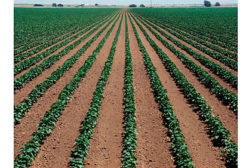Business Strategies | 2020 Crop Report
Home » crops
Articles Tagged with ''crops''
Business Strategies
2016 crops: Flying high at the end of July
At presstime, the corn crop forecast looked good for protein producers for the third year in a row.
Read More
Business Strategies
2015 harvest outlook: Positive signs shine down
At presstime, U.S. crop reports signaled a 2015 harvest pacing similarly to the outstanding 2014 growing season.
Read More
Business Strategies
Corn, soybean crops cooperating thus far in 2014
Yield efficiency also continues to increase.
Read More
Stay ahead of the curve. Unlock a dose of cutting-edge insights.
Receive our premium content directly to your inbox.
SIGN-UP TODAYCopyright ©2024. All Rights Reserved BNP Media.
Design, CMS, Hosting & Web Development :: ePublishing









